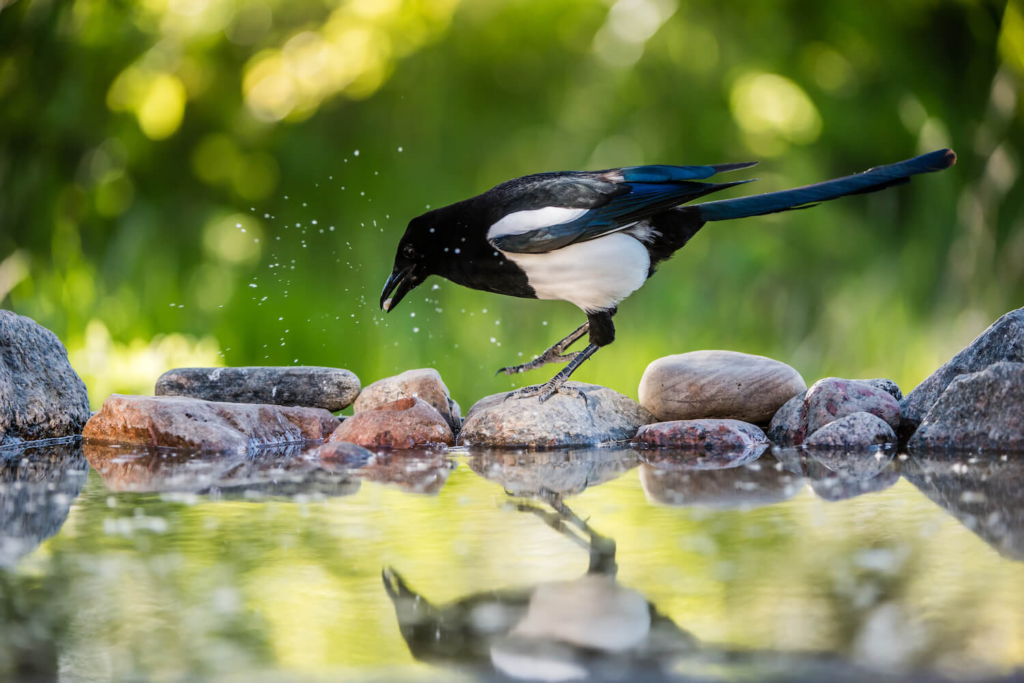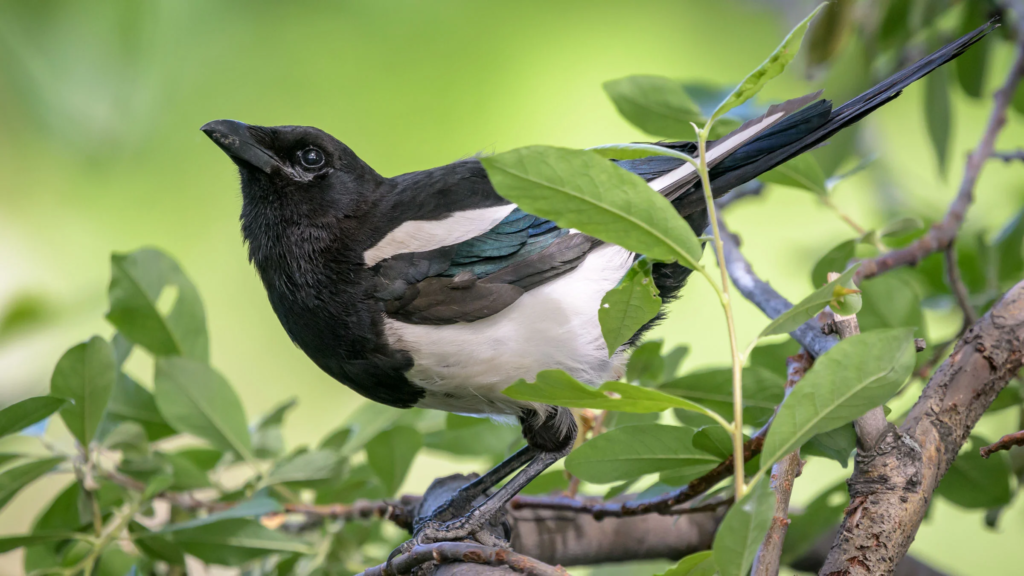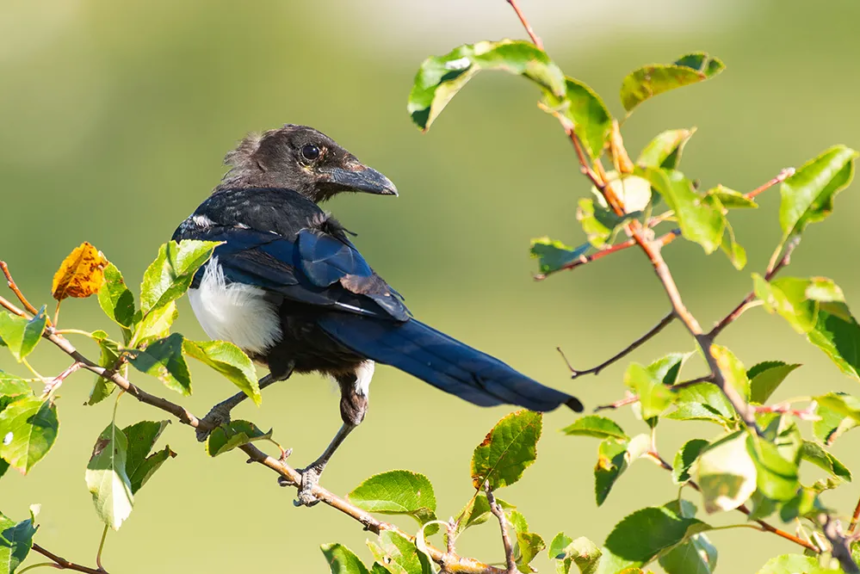Delve into the problem-solving skills and tool usage of the Eurasian Magpie, uncovering the fascinating intelligence of this avian marvel.
Eurasian magpie : Introduction
The Eurasian magpie, commonly known as the common magpie, is a bird that has captivated human imagination for centuries. With its distinctive jet black and white feathers and wings streaked with shades of purple, green, and blue, the magpie has become enshrined in folklore and superstition. Old British rhymes foretell the fate of individuals based on the number of magpies they encounter, reflecting the bird’s mysterious and mythical reputation. However, beyond the superstitions lies a remarkable creature with an extraordinary level of intelligence.
ALSO READ : Exploring The Enchanting Ellora Caves : A UNESCO World Heritage Site

Mythical connotations
The folklore surrounding the Eurasian magpie is rife with superstitions that have persisted through generations. An old British rhyme ominously states, “One for sorrow, two for mirth, three for a funeral, and four for birth,” suggesting that the number of magpies seen can predict one’s fate. Failing to salute a magpie is believed to bring bad luck, and a solitary magpie perched on a window is thought to signal loneliness and impending death. Despite these mythical connotations, the true marvel of the magpie lies in its natural abilities and intelligence.

A bird brain like no other
The common magpie stands out as one of the most intelligent birds and, indeed, one of the most intelligent animals on Earth. The key to their remarkable cognitive abilities lies in their impressive brain-to-body-mass ratio, surpassed only by humans and on par with aquatic mammals and great apes. Magpies exhibit a diverse range of cognitive skills, from tool-making and tool usage to imitation of human speech, grieving, playing games, and even working in teams.

Social complexity and “Funerals”
Magpies showcase an uncommon degree of social complexity in the avian world. When one of their group dies, they engage in a behavior reminiscent of a funeral. A gathering congregates around the deceased magpie, accompanied by squawks and cries, indicating a collective acknowledgment of the loss within their community. This conduct implies a remarkable level of emotional intelligence and social awareness, attributes not typically attributed to birds. The observed funeral-like rituals highlight the intricacies of magpie social structures and hint at a depth of emotional understanding within these avian communities.

Tool usage and problem-solving
One of the most remarkable aspects of magpie intelligence is their ability to make and use tools. In the wild, magpies have been observed fashioning tools from twigs and other materials to extract insects from tree bark or to access hard-to-reach food sources. This demonstrates a level of problem-solving ability that showcases their adaptability and resourcefulness.

Mirror test success
Magpies have also passed the mirror test, a cognitive experiment that assesses an organism’s ability to recognize itself in a reflection. Only a select few species, including humans, great apes, dolphins, elephants, and some ants, have demonstrated this level of self-awareness. Magpies, when marked with a colored dot visible only in a mirror, have been observed attempting to remove the mark from their own bodies, showcasing an advanced cognitive capability.

Conclusion
The Eurasian magpie’s name may be steeped in mythical connotations, but its true marvel lies in its intelligence and natural abilities. From social complexity and “funerals” to tool usage and successful performance in cognitive experiments, magpies continue to defy expectations and challenge our understanding of avian intelligence. As we unravel more about these remarkable birds, the Eurasian magpie stands as a testament to the incredible cognitive diversity found in the animal kingdom.
To explore more news : Click Here
ALSO READ : The Majestic Rhinoceros : Giants Of The Land Facing A Precarious Future




































